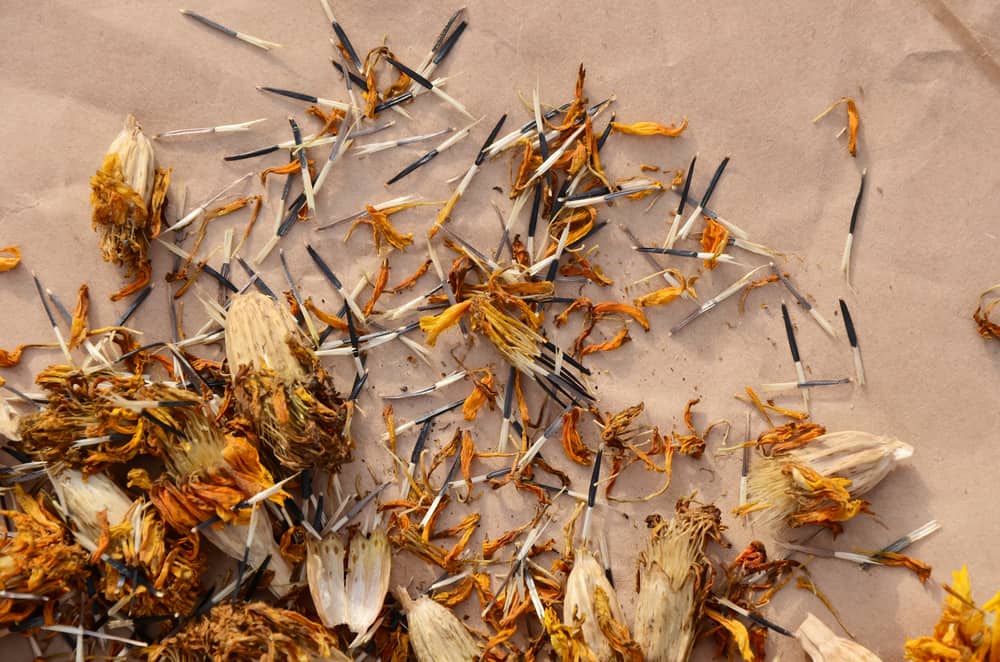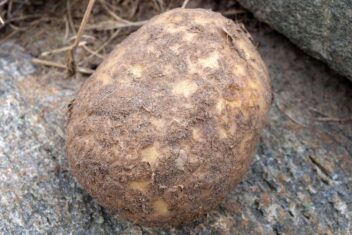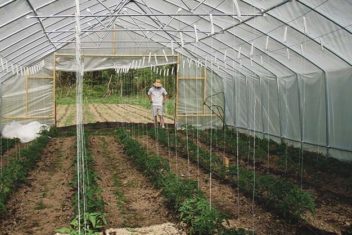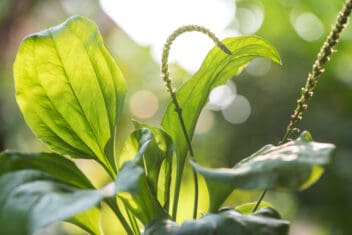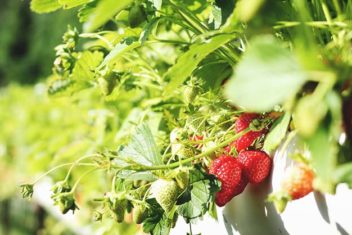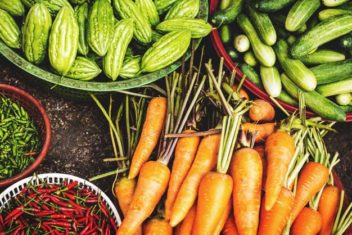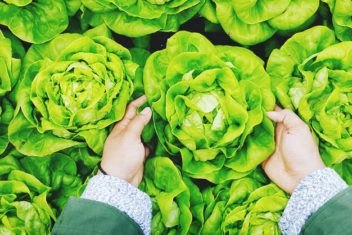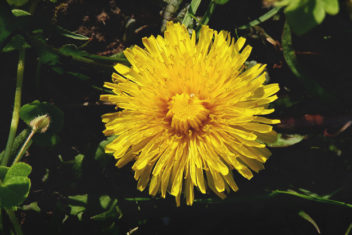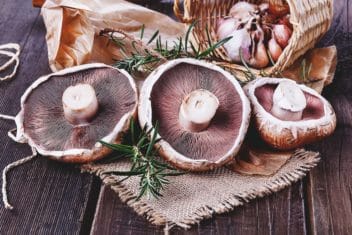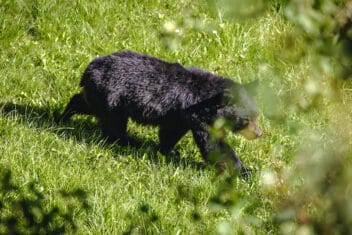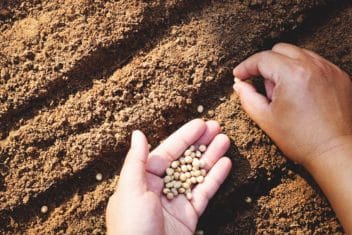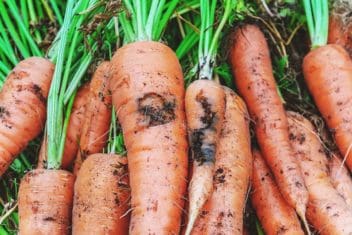I’ll embrace any idea that can help me save time in the garden. One great way to get some of your time back is to choose plants that self-seed, grow for a season, then self-seed again. Self-seeding annuals are the gift that keeps on giving.
That’s right. There are annuals that you plant once, and they will grow for you season after season with little effort other than maintenance.
This saves time and money. It also means you can factor in your plant plans for the next season or beyond.
If you’re ready to talk self-seeding annuals, let’s get on and save you time and money.
Flowers
Just a heads-up that when we talk about the potential USDA Growing Zones, these are the areas where the plant will survive as an annual, but the seeds themselves might be killed during the winter.
Generally, self-seeding annuals will reliably return in Zones 6 and up, but it can vary by species.
If you want to ensure the seeds will return in colder Zones, collect them and store them in a dry, cool area over the winter.
Let’s look at flowers first. There are many to choose from, so we’ll talk about the favorites that we’ve had fun with.
There are many more self-seeding annual flowers, so talk to others in your area to see their success. Many of my favorite annuals that reward me year after year are grown by my rural neighbors because they have had success with them as well.
1. Amaranth
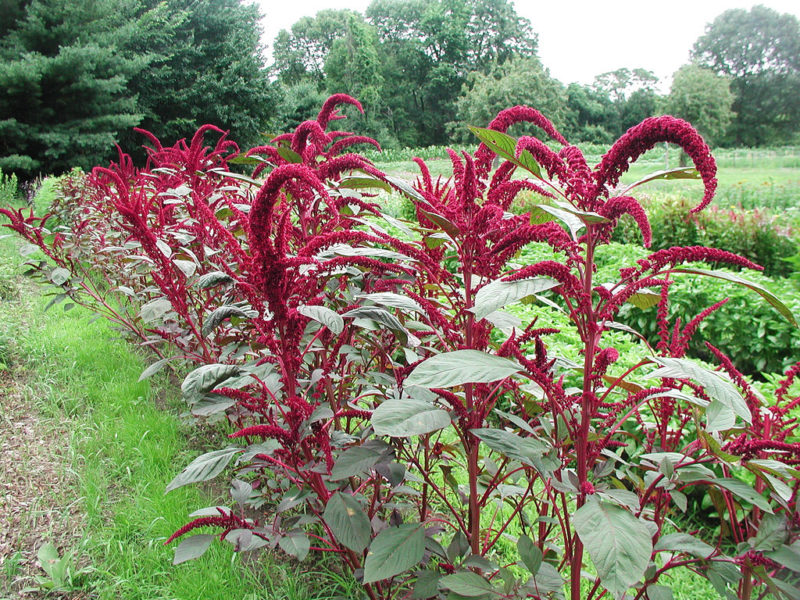
I know amaranth (Amaranthus spp.) is also a tasty grain and edible, but it is also perfect for flower arrangements to add both structure and color contrast. When you plant amaranth, you will see the sheer number of seeds produced, so it’s no wonder it self-seeds. It also spreads around your garden thanks to birds, insects, and the wind.
Plant some seeds from Gaea in USDA Growing Zones 5 to 9.
2. Cornflower
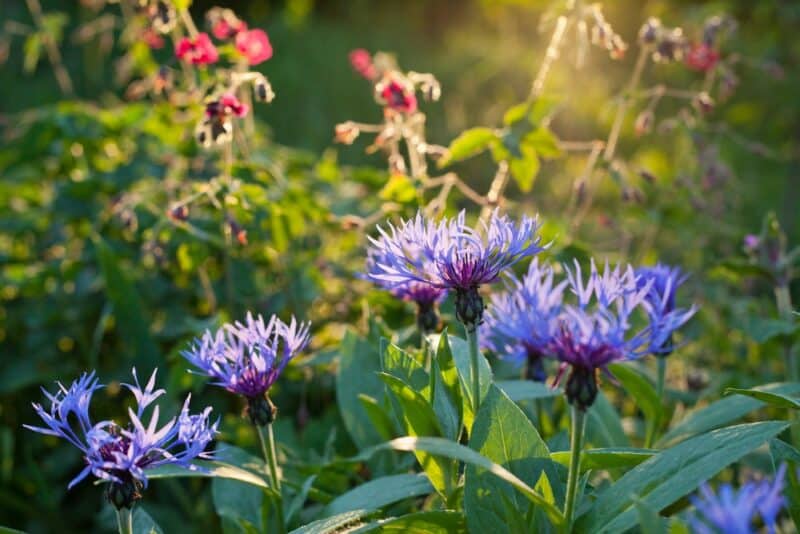
Originally a native to Europe and Asia, cornflower (Centaurea cyranus) grows well and is a reliable self-seeder. In Zones 2 to 11, you will get a 10-week bloom time, and maybe longer if you deadhead the plants.
Cornflower, also known as bachelor buttons, will spread, but it’s easy to control because it pulls out without much effort. Interestingly, this flower was considered a weed in corn fields, hence the name.
3. California Poppy
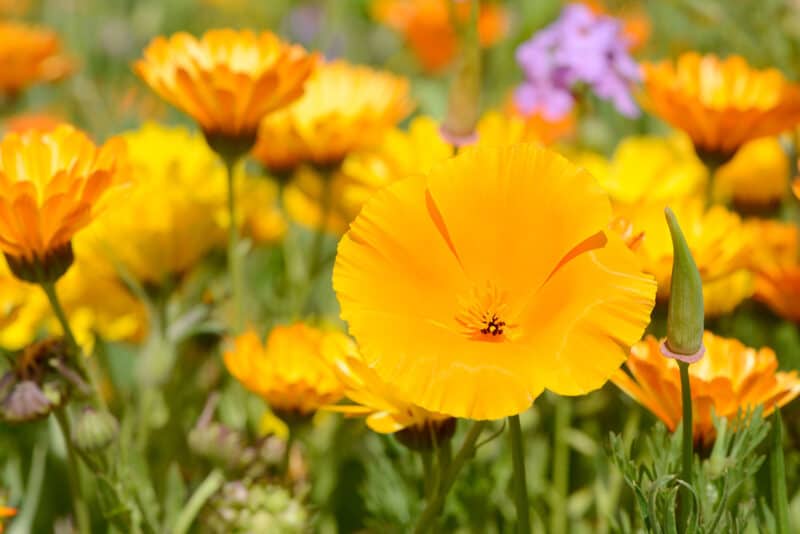
If you’ve sown commercial wildflower mixes, you will be familiar with the California poppy (Eschscholzia californica). Try growing it on its own, and you won’t be disappointed.
Many gardeners grow this poppy with the sole intention of letting it self-seed. In Zones 3 to 10, you will get successful self-seeding. In zones 6 to 10, you may end up with perennials.
Try planting a large area with California poppies, and let it grow and spread. Grab an ounce pack from Sweet Yards.
4. Larkspur
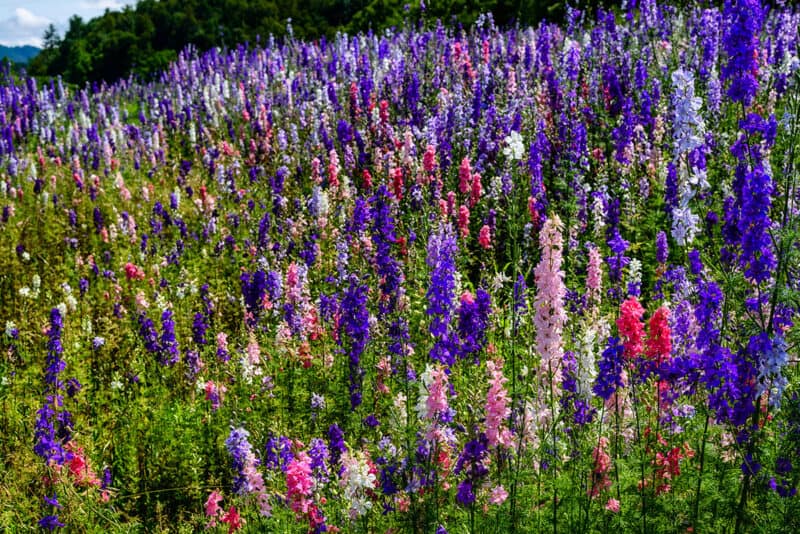
Plant larkspur (Consolida spp.) in a cooler climate because the seeds must be stratified. Winter takes care of all that work for you because the seeds won’t germinate above 65ºF.
Ensure you provide water in dry times; this plant will self-seed year after year. Perfect in Zones 2 to 11 in sunny positions in the garden. Pick up a packet of seeds from Outside Pride on Amazon.
5. Forget Me Nots
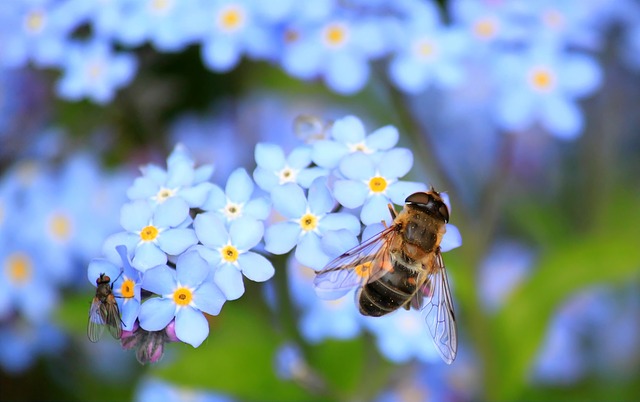
Cynoglossum plants are self-seeding annuals that may need a little effort from you to contain them. It does self-seed readily in damp shady areas. You can even use forget-me-nots to naturalize a shaded wood area.
Plant around ponds or sites that may be too damp for other plants. Great in Zones 3 to 8.
6. Cosmos
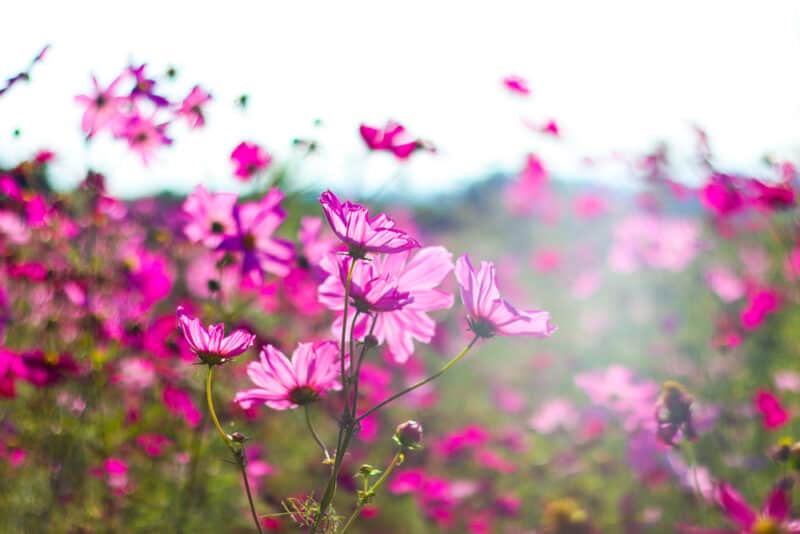
There are a lot of varieties of cosmos (Cosmos spp.). Some are perennials, and some are annuals. They all attract bees and other beneficial pollinators.
Cosmos are slower to germinate than some other flowers, so many gardeners think they don’t self-seed. The truth is, they are such prolific self-seeders that, in some areas, they are considered invasive. Plant in Zones 2 to 11.
7. Tall Verbena
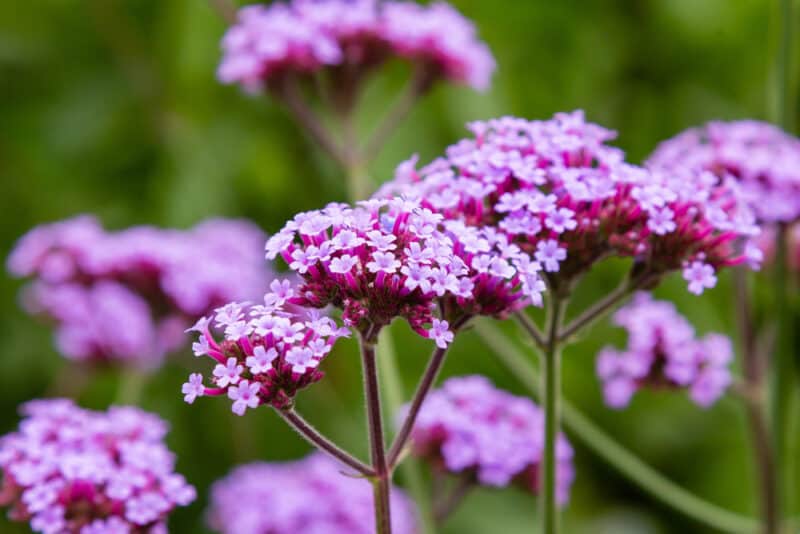
Tall verbena (Verbena bonariensis) is a reliable self-seeder. It likes sunny to part shade positions and well-draining soil. Particularly attractive in cottage gardens, tall verbena produces tight clusters of purple flowers that contrast with other blooms nicely, especially in a garden border. Tall verbena is hardy in Zones 7 to 11.
8. Pot Marigold
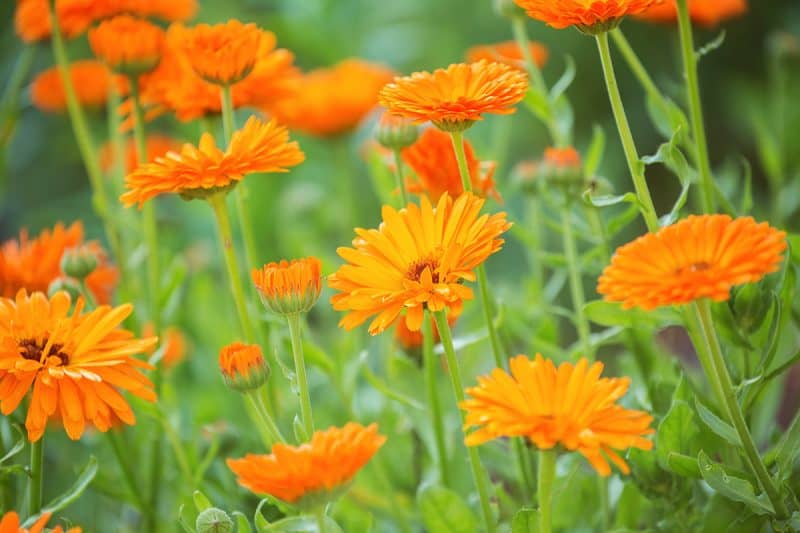
Otherwise known as calendula (Calendula officinalis), pot marigold offers a long bloom time over several months in the right environment.
Dead-heading is always recommended to extend the time flowers bloom, but make sure you leave some to go to seed. You don’t need too many, just make sure you leave seed heads on late in the season. This cheerful little plant brightens gardens in Zones 2 to 11.
Snag a packet for your garden from Seeds2Go on Amazon.
9. Borage
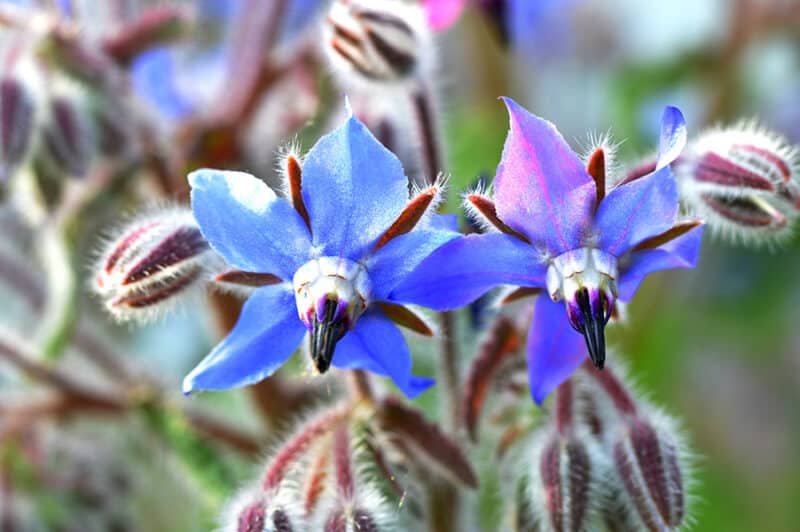
Of all the self-seeders, I find borage (Borago officinalis) the most likely to appear in locations quite far from its original spot. Borage is happy in poor-quality soil as long as it drains well and is in Zones 3 to 10.
Deer ignore borage most of the time. It is perfect for informal gardens because it can get a little ragged looking as it ages.
10. Spider Flower
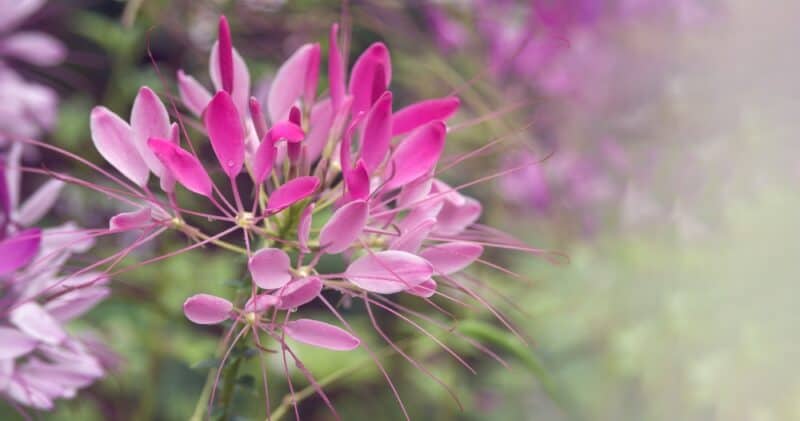
If you want to attract butterflies and hummingbirds to your garden with a self-seeding annual, spider flower is the one. It is drought-tolerant and likes the sun in Zones 10 and 11.
Spider flower (Cleome spp.) usually has thorns, but there are some new cultivars that are not only thornless but don’t self-seed. So, if you’re after a self-seeding variety, make sure to ask when you purchase it.
11. Love in a Mist
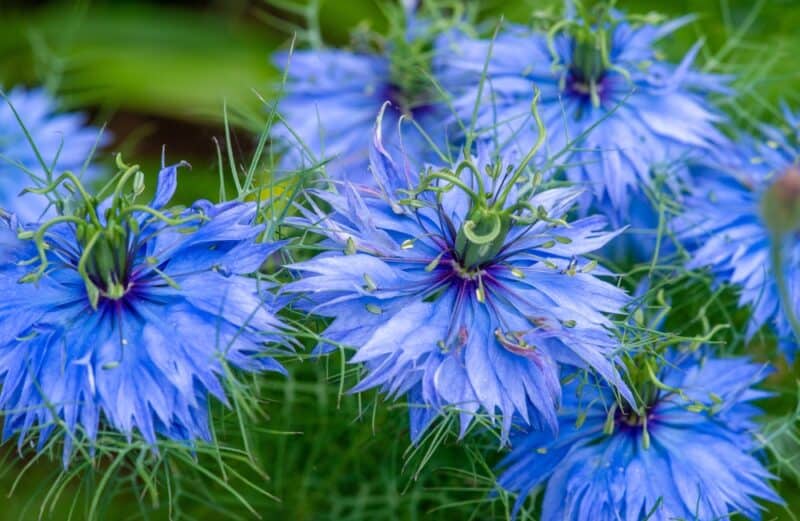
I have to admit; I planted this nigella (Nigella damascena) because of its name. I’m glad I did because it created a lovely display in an area I had trouble filling. On top of that, every year, the display returns a little bigger each time.
Treat this plant right and you’ll get displays from spring through to the end of summer. Full sun and moist, well-draining soil are really all that’s needed in zones 2 to 11.
12. Morning Glory
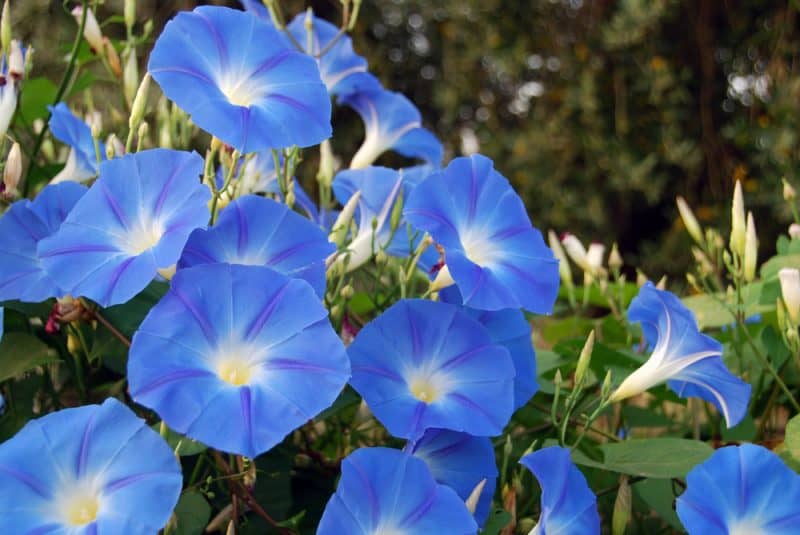
First, a word of warning. Morning glory (Ipomoea tricolor) can be an aggressive self-seeder. You will likely need to thin it out yearly to prevent excess growth and spread. The good things about it, though, are it is a vining annual, and it will adapt to a trellis area and to partial shade.
The flowers open in the morning and close in the afternoon as it gets hot. It’s an excellent plant in areas where you might relax just before the peak of the day’s heat. Grab some seeds to get started with from Sweet Yards.
Self-Seeding Herbs and Vegetables
There are many veggies out there that will return year after year if you let them. Here are some of the best options:
13. Shiso
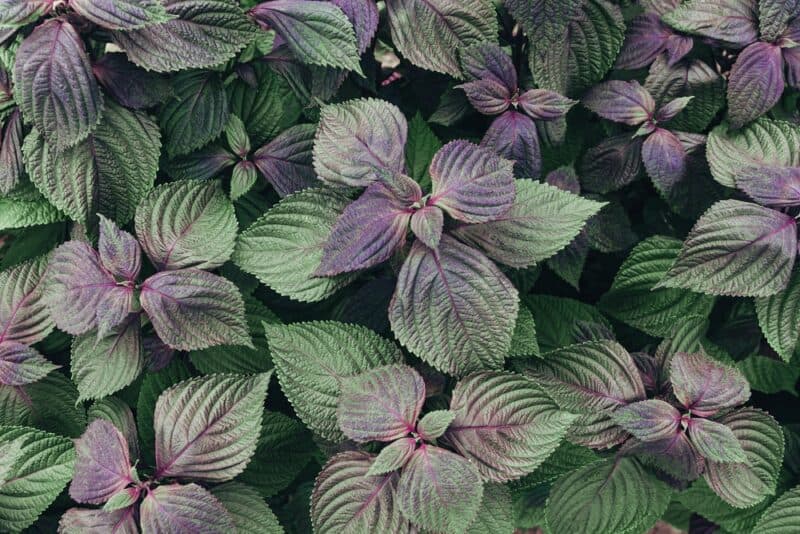
Perilla frutescens is an excellent plant to use as a filler in a border or bank. It’s not a showy plant. It is upright and bushy and forms little white flowers. It is reliable, however. Just provide beefsteak with rich organic soil that remains moist but drains well.
Shiso will also handle dry soil and is quite drought resistant. It will also grow and self-seed in partial shade. Use this plant for areas where you will plant and potentially leave it to self-seed and create its own little garden.
14. Spinach
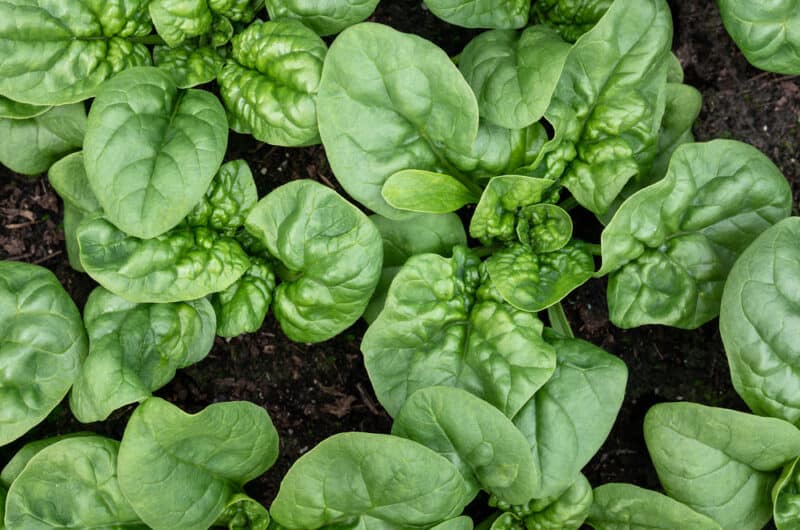
Spinach (Spinacia oleracea) is one of the most reliable self-seeding annuals in the garden. I have it pop up everywhere, and I pick it as needed. The following year, it shows up again.
Being a cool-weather vegetable, spinach will bolt to seed early in the summer. Let one or two plants go through the process.
One of the best self-seeding annuals, grow spinach in Zones 2 to 11.
15. Mustard
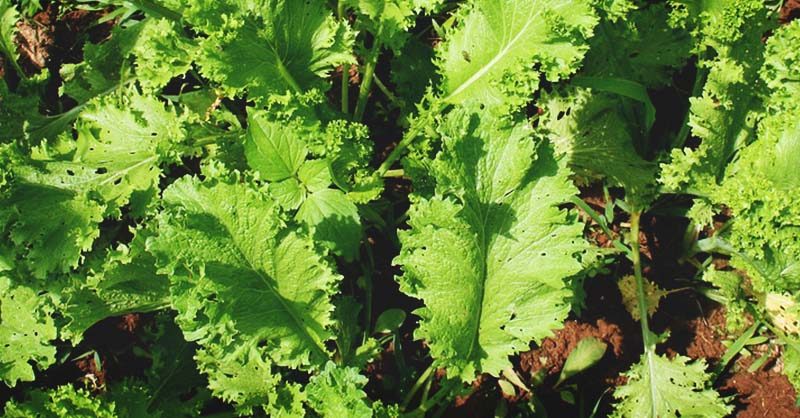
Mustard greens (Brassica rapa subsp. narinosa) are a traditional food crop in many areas, and the ease with which it self-seeds and regrows is probably why.
Giant red mustard is the most prolific of the mustard self-seeding annuals and will reappear for years in various parts of the garden.
In Zones 4 to 7, keep the soil moist for as long as possible, and when the plant goes to seed, resist pulling it out. You may not eat it from that point on due to bitterness, but it will create many more plants next season.
16. Arugula
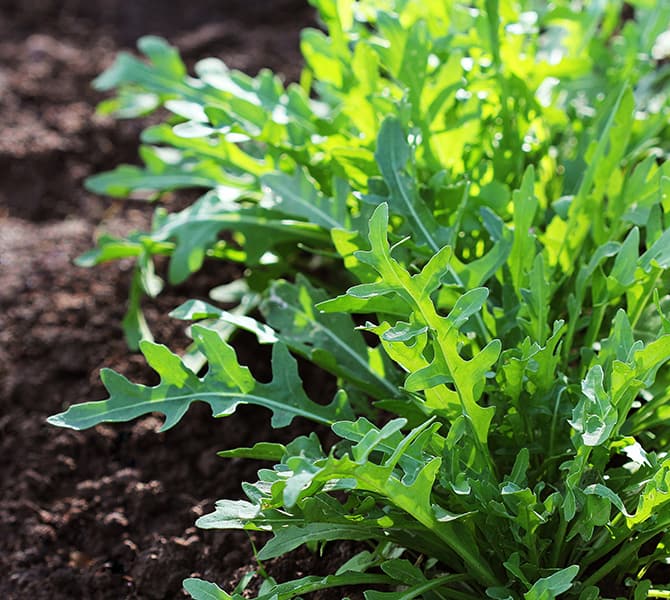
Arugula (Eruca sativa) may be one of the first vegetables to grow in spring, but it is also one of the first to bolt to seed as the weather heats up. Plant taller vegetables nearby to shade the arugula and keep the soil moist. This should protect the seeds until they go dormant the following year.
I planted arugula several years ago, and I get a yearly harvest without ever planting it again. Try spinach in Zones 2 to 11. They’re reliable self-seeding annuals that keep on giving.
17. Tomato

If you plant heritage tomatoes (Solanum lycopersicum) and let some fall into the soil, you may have new tomato plants the following year. Tomato seeds have a remarkable ability to wait in the garden until the time is right, and then they pop up. They are sometimes so prolific that you will probably have to thin them out to just a few of the strongest ones.
I find cherry tomatoes pop up in the garden, the lawn, and even the compost heap.
18. Nasturtium
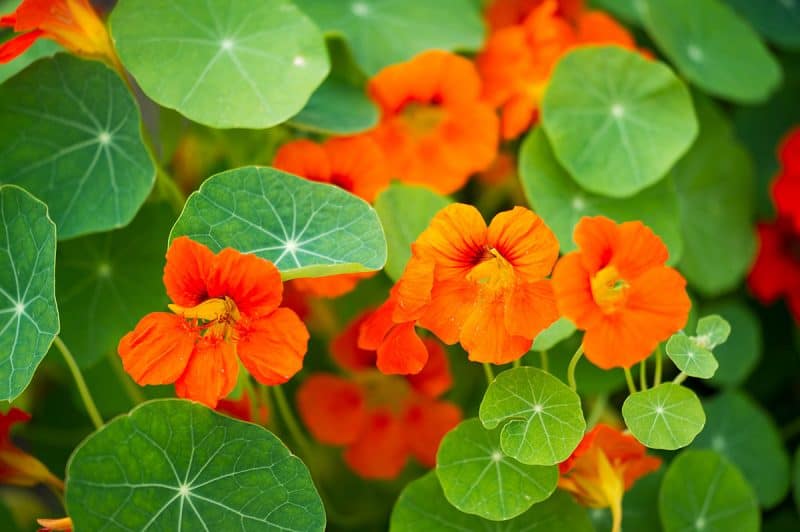
Even when you plant nasturtium (Tropaeolum majus) in containers (which I recommend over planting in the garden), it will self-seed. Of all the plants I enjoy year after year, nasturtium is the hardest to control.
It will take over an area quickly, so keep it in check. It drops a lot of seeds. Only plant nasturtium if you have the time and ability to keep it from spreading uncontrollably in Zones 9 to 11.
For a bulk pack of seeds of these reliable self-seeding annuals, head to Amazon.
19. Kale
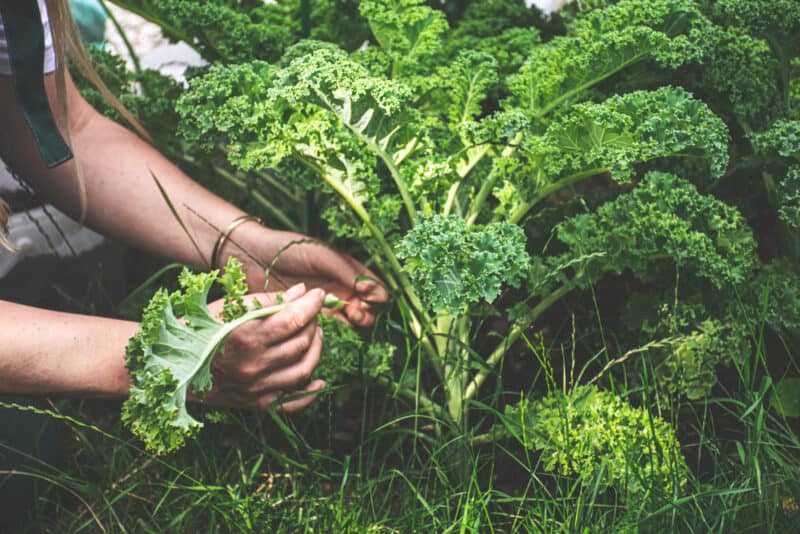
Although kale (Brassica oleracea var. sabellica) is a cool-weather plant, it lasts longer to bolt to seed than other plants like spinach. Kale will grow well into the summer if it’s not too hot.
It will grow through the winter and drop seeds in the summer once it has bolted. Wait until the following fall; you should see new kale plants poking their head through the soil. You will see the best results in Zones 7 to 10.
Many vegetables will grow year after year, so have fun and experiment.
5 Tips for Growing Self-Seeding Plants
- Allow seed heads to develop on some of the plants throughout the season. This way, you will be able to ensure growth the following year. Some plants lose vigor as the season continues, which may be the same as the seeds.
- Leave the soil around self-sowing annuals bare. The seeds need direct contact with the soil to overwinter and remain viable. Things like bark, wood, or stones will prevent that process. Use mediums that rot quickly, like compost, grass clippings, or similar.
- Although some self-sowing plants grow anywhere under any conditions, most require specific conditions. If you don’t succeed with one plant, try different ones because there are self-seeding plants suitable for any environment.
- Have fun. Try self-seeding annuals for flowers, foliage, vegetables, and ground cover.
- Remember that you need to let your flowers or plants go to seed. Don’t deadhead or remove the developing seed pods. It’s tempting to pinch the heads on spinach, for instance, since that signals the end of its life. But if you pinch those heads, you won’t get seeds.
